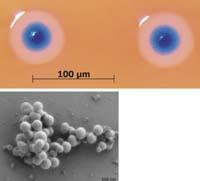They manage to manufacture the first cell with synthetic genome

A step in creating artificial life
J. Daniel Gibson and his team at the Craig Venter Institute have managed to make the first cell controlled by a synthetic genome.
They previously developed, on the one hand, the method of making the synthetic genome and, on the other, the method of integrating the genome of one cell into another cell. They have now joined together both methods and introduced a synthesized genome into a cell in the laboratory and managed to get the genome to acquire the receptor cell.
In fact, the genome of an existing species, Mycoplasma mycoides, has been synthesized, using a marker to separate it from the natural genome. Subsequently, the synthesized genome has been introduced into a bacterium of the species Mycoplasma capricolum. Although 14 genes have been removed in the receiving bacteria, according to researchers, "M. mycoides has the appearance of a vulgar and produces its proteins."
The aim of the researchers is to improve and refine this methodology to synthesize the genome containing the desired genes and to create useful cells for different applications in the future, such as fuel production or environmental cleaning.





